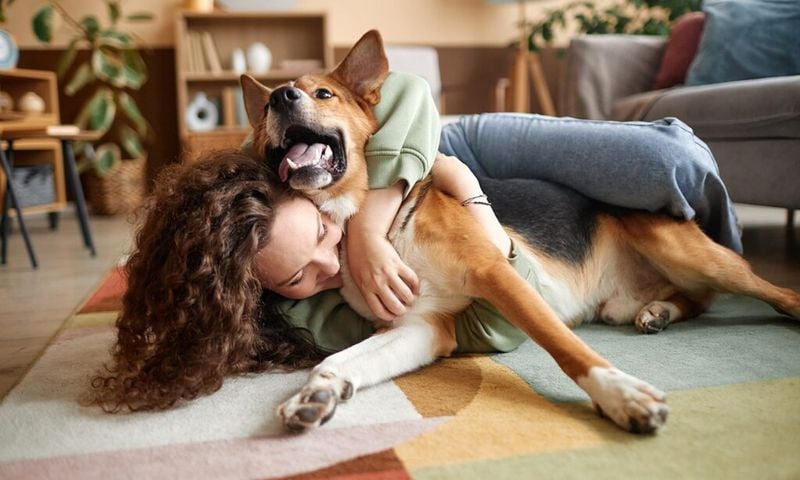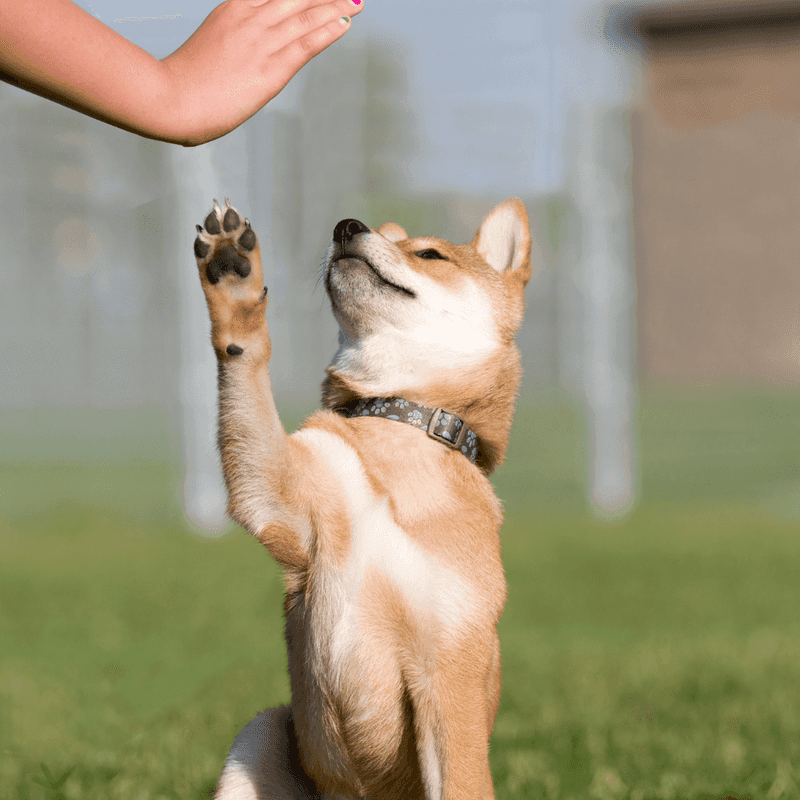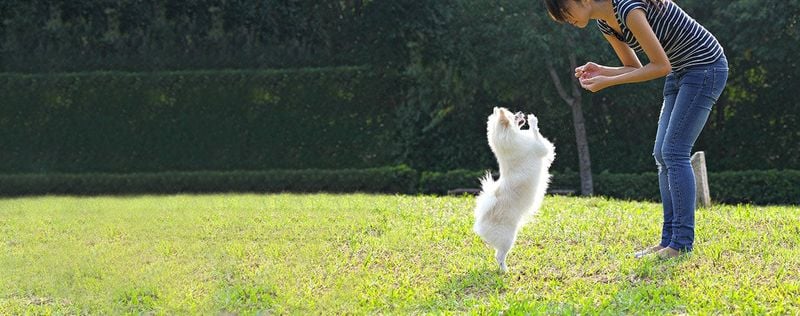17 Basic Things Everyone Gets Wrong About Dogs
Dogs are loyal, loving, and always up for a good belly rub—but that doesn’t mean we understand them as well as we think.
In fact, many dog owners unknowingly believe myths that can lead to confusion, frustration, or even harm. From body language misreads to outdated training advice, there’s a lot of misinformation still floating around.
And while most of it comes from a good place, some of these “truths” might actually be doing your pup a disservice.
Whether you’re a lifelong dog lover or a new pet parent, it’s time to separate fact from fiction. These are the 17 things almost everyone gets wrong about dogs—busted wide open.
You might be surprised at how many of these common beliefs you’ve held onto without ever questioning them. Your dog will thank you for getting it right.
1. Dogs Understand Guilt
That “guilty” face your dog makes? It’s really just a reaction to your tone of voice and body language, not guilt.
Dogs have evolved to read human cues intensely, so when they sense your disappointment, they may look remorseful. But it’s not the same as human guilt.
Instead, it’s their way of showing submission or concern. This behavior has been misinterpreted by many as an admission of guilt, but in reality, it’s a reflection of their understanding of our emotional state.
Next time you see that face, remember: they’re just responding to you, not confessing to a misdeed. It’s a testament to the strong bond they share with humans.
2. A Wagging Tail Always Means a Happy Dog
When a dog’s tail is wagging, it’s easy to assume they’re happy. However, tail wagging can signify a range of emotions, including fear, anxiety, or aggression. The position and speed of the wag can provide clues about what they’re feeling.
For example, a high and stiff wag can be a warning sign, while a slow wag with a lowered tail might indicate insecurity. Understanding these signals can help in interpreting what your dog is truly communicating.
So, instead of assuming happiness, take a closer look at the position and rhythm of their tail. It’s their unique language telling us more than just joy.
3. You Should Always Be the “Alpha”
The idea of being the “alpha” has its roots in outdated dominance theory, which suggested that dogs need a strict hierarchy. Modern understanding of dog behavior shows that trust and cooperation are more effective.
Researchers have debunked this theory, highlighting that dogs thrive on mutual respect rather than fear-based control. Training based on positive reinforcement helps build a stronger bond and fosters better understanding.
Embracing this approach means moving away from dominance-based techniques, focusing instead on communication and empathy. This shift reflects our growing understanding of the complexities of canine behavior.
4. All Dogs Love Hugs
Many dog owners love to hug their furry companions, but not all dogs enjoy this gesture of affection. While some may tolerate hugs, others can feel trapped and stressed.
Dogs communicate through body language, and restraining them can be unsettling.
Recognizing your dog’s comfort level is key to ensuring their happiness. Instead of hugs, try showing affection in ways they enjoy, like gentle petting.
Understanding their boundaries not only enhances your relationship but also respects their individual preferences. By respecting their space, you’ll create a more comfortable environment for your pet.
5. Dry Nose = Sick Dog
It’s a common belief that a dog’s dry nose is a sign of illness, but this isn’t always the case. A dog’s nose naturally varies in moisture throughout the day due to environmental factors and activity levels.
A dry nose can occur after a nap or time spent in a warm room, and it doesn’t necessarily indicate a health problem. Monitoring other signs like appetite and behavior is more indicative of their well-being.
Next time you notice a dry nose, don’t jump to conclusions. Consider the whole picture of their health and consult a vet if you have concerns.
6. Dogs See in Black and White
The notion that dogs see in black and white is a long-standing myth. In reality, dogs perceive the world in shades of blue and yellow, enriching their visual experience beyond grayscale.
This limited color range is due to having fewer color receptors compared to humans. Understanding their vision helps in choosing toys and environments that cater to their perception.
While they may not see the world quite like us, their ability to detect movement and brightness exceeds ours. This unique vision suits their needs, making them exceptional companions in their own right.
7. One Human Year = Seven Dog Years
The “seven dog years” rule is a simplified way of understanding canine aging, but it doesn’t hold true across the board. Aging rates vary significantly by breed and size, with smaller dogs often living longer than larger ones.
This misconception can lead to misjudgments about a dog’s stage in life. It’s essential to consider individual factors like health and genetics in assessing their age.
By understanding these nuances, owners can better cater to their pet’s needs throughout their life stages. Age isn’t just a number; it’s a combination of various factors that contribute to their well-being.
8. Mixed Breeds Are Always Healthier
While mixed breeds often benefit from genetic diversity, making them less prone to certain inherited diseases, they aren’t immune to health issues. Like purebreds, mixed breeds can inherit conditions from their lineage.
It’s a misconception that they are automatically healthier. Regular vet check-ups and a balanced lifestyle are crucial for any dog’s health.
Understanding that health depends on more than just breed can lead to better care and attention to their needs. Every dog, regardless of lineage, requires love, care, and medical attention to thrive.
9. Dogs Shouldn’t Sleep in Your Bed
The debate on whether dogs should sleep in your bed is ongoing, but there’s no universal rule. For many, co-sleeping strengthens the bond and provides comfort for both pet and owner.
Some concerns include hygiene and allergies, but these can often be managed with regular cleaning. It’s about finding what works best for you and your furry friend.
Ultimately, it’s a personal choice that should consider the needs and comfort of both parties involved. If both are happy, there’s no reason to deny the pleasure of snuggling with your companion at night.
10. Aggression Means a “Bad” Dog
Aggression in dogs is often misunderstood as a sign of bad character, when in reality, it can stem from fear, medical issues, or challenging situations.
Addressing aggression involves understanding its root causes and working patiently with the dog.
Professional training can help modify behavior by identifying triggers and teaching coping mechanisms. It’s about compassion, not condemnation.
Recognizing that aggression is a form of communication allows owners to address the underlying problems effectively. Patience and empathy can transform a challenging behavior into an opportunity for growth and connection.
11. Rescue Dogs Are Too “Broken”
The idea that rescue dogs are “broken” is a misconception that undervalues their potential. Many rescue dogs simply need time, understanding, and love to adjust to a new environment.
Their past experiences may require patience, but the rewards of adopting a rescue are immense. With the right care, they can thrive and become loving companions.
Seeing beyond their past and focusing on their future can change both their lives and yours. Embrace the opportunity to provide a second chance and witness the transformation that love can bring.
12. Puppies Can’t Learn Until They’re Older
Contrary to the belief that puppies can’t learn until they’re older, early training is essential for their development. Puppies as young as 8 weeks old are capable of learning basic commands and social skills.
Early training sets the foundation for a well-behaved adult dog and prevents future behavioral issues. Short, fun sessions can keep their attention and make learning enjoyable.
Recognizing the importance of early education fosters a lifetime of good habits. Start training early, and you’ll be rewarded with a well-adjusted, confident companion.
13. Dogs Who Bark a Lot Are Badly Behaved
Barking is a natural form of communication for dogs, not necessarily a sign of bad behavior. Understanding the reasons behind barking can help address the underlying causes.
Dogs may bark out of excitement, boredom, alerting, or seeking attention. Identifying these triggers allows for more focused training and redirection.
Instead of labeling a dog as misbehaved, consider the context of their vocalizations. With patience and understanding, you can guide them towards more appropriate ways to express themselves.
14. Small Dogs Don’t Need Training
It’s a common misconception that small dogs don’t require training due to their size. In reality, every dog, regardless of stature, benefits from discipline and boundaries.
Training helps small dogs become more confident and well-behaved, reducing anxiety that often leads to undesired behaviors. Positive reinforcement techniques can be particularly effective.
Embracing training as an essential part of their routine enriches their lives and strengthens your bond. Whether big or small, all dogs thrive with guidance and structure.
15. Dogs Shouldn’t Eat People Food Ever
Many believe that dogs should never eat human food, but some foods are perfectly safe and even beneficial for them. Items like carrots, apples, and plain chicken can be healthy treats.
However, it’s important to know which foods are toxic (like chocolate or grapes) and ensure portions are appropriate. Sharing food can be a delightful bonding experience when done with care.
Understanding safe options and limits provides variety in their diet and enhances their culinary enjoyment. With informed choices, you can treat your dog to occasional human food safely.
16. Dogs Will Just ‘Figure Out’ How to Socialize
Many assume that dogs will naturally learn to socialize, but this skill requires guidance and practice. Socialization is crucial for developing confidence and preventing anxiety in new situations.
Exposing your dog to various environments, people, and other animals helps them become well-adjusted. It’s a continual process that shapes their interaction skills.
By actively guiding their social experiences, you ensure a happier, more adaptable pet. Socialization isn’t automatic, but with effort, it can be a rewarding journey.
17. All Dogs Love Other Dogs
Not all dogs love the company of other dogs, and that’s perfectly normal. Some are selective or prefer human companionship. Forcing interactions can lead to stress or aggression.
Understanding your dog’s preferences allows for better social decisions and ensures their comfort. It’s about respecting their individuality and creating positive experiences.
By recognizing that not all dogs are social butterflies, you can tailor their interactions accordingly. Embrace their unique personality, and you’ll foster a more fulfilling relationship.























